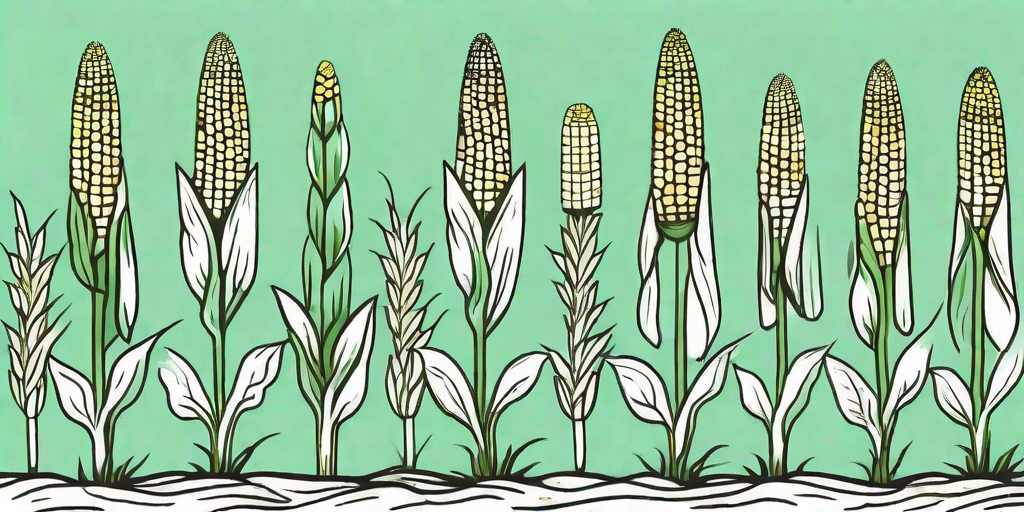
Welcome, dear reader, to the grand spectacle that is corn identification. It's a wild and thrilling ride, filled with kernels of truth, stalks of knowledge, and the occasional cob of wisdom. So, buckle up, grab your magnifying glass, and let's dive into the riveting world of corn spotting.
The Basics of Corn Identification
Before we embark on this journey, it's important to understand what exactly we're looking for. Corn, also known as maize, is a grain plant that originated in southern Mexico. It's now grown worldwide, thanks to its versatility and adaptability. But what does it look like, you ask? Well, let's break it down.
Corn plants are generally tall, reaching heights of up to 12 feet. They have long, slender leaves that grow from a central stalk. The ears of corn, which are the part we eat, grow out from the sides of the stalk. Each ear is covered in a husk and contains rows of kernels. But enough of the technical jargon, let's get to the fun part.
Stalks, Leaves, and Kernels, Oh My!
When identifying corn in the field, the first thing you'll notice is the stalk. It's tall, sturdy, and green, much like a tree trunk, but without the bark. The stalk is the backbone of the corn plant, supporting all of its other features.
Next, take a look at the leaves. They're long, slender, and pointed, with a slightly wavy edge. They grow out from the stalk in a spiral pattern, creating a sort of green tornado effect. If you're feeling particularly adventurous, you can even try to count the leaves. A mature corn plant usually has about 20.
Finally, we come to the kernels. These are the little nuggets of gold (or white, or blue, or red, depending on the variety) that we're all familiar with. They're found inside the ears, which are covered by a protective husk. The kernels are arranged in rows, usually 16 or more, and each one is attached to a strand of silk, which is how the corn plant gets pollinated.
The Different Types of Corn
Now that we've covered the basics, let's delve into the different types of corn. Yes, you heard right, there's more than one type of corn. In fact, there are several, each with its own unique characteristics and uses.
Before we proceed, let's take a moment to appreciate the diversity of corn. It's not just a one-trick pony, but a versatile and adaptable plant that has been cultivated and modified over thousands of years to suit our needs. So, without further ado, let's meet the corn family.
Sweet Corn
Sweet corn is the type of corn that most people are familiar with. It's the kind you find at the grocery store or at your local farmers market. Sweet corn is known for its sweet, juicy kernels, which can be yellow, white, or a combination of both.
When identifying sweet corn in the field, look for plants that are about 8 feet tall with tassels (the male flowers) that are light brown or pink. The ears are medium-sized, with a tight husk that's slightly green or yellow.
Field Corn
Field corn, also known as dent corn, is the most widely grown type of corn in the United States. It's used for animal feed, ethanol production, and as a raw material in industry. Field corn is not typically eaten by humans, as it's too hard and starchy.
Field corn plants are tall and robust, with large ears that have a loose husk. The kernels are usually yellow or white, and they have a distinctive dent on the top, hence the name.
Popcorn
Popcorn is a special type of corn that's grown specifically for popping. When the kernels are heated, they explode into a fluffy, white snack that's loved by people all over the world.
Popcorn plants are smaller than other types of corn, usually only about 5 feet tall. The ears are also smaller, with a tight husk that's usually yellow or red. The kernels are hard and shiny, and they come in a variety of colors, including white, yellow, red, and even blue.
FAQs
Can I grow different types of corn together?
While it's possible to grow different types of corn together, it's not recommended. Corn is a wind-pollinated plant, which means that the pollen from one plant can easily fertilize another plant. This can lead to cross-pollination, which can affect the quality and characteristics of the corn.
How can I tell if my corn is ready to harvest?
The best way to tell if your corn is ready to harvest is by checking the kernels. They should be plump and juicy, and when you puncture one with your fingernail, a milky liquid should come out. The silk should also be brown and dry, and the husks should be green and tightly wrapped around the ear.
What's the difference between corn and maize?
Corn and maize are actually the same plant. The term "corn" is commonly used in the United States, while "maize" is used in most other English-speaking countries. So, whether you call it corn or maize, you're talking about the same delicious, versatile grain.
Conclusion
And there you have it, folks. A comprehensive guide to identifying corn in the field. We've covered everything from the basics of corn identification to the different types of corn and even answered some frequently asked questions. So, the next time you find yourself in a corn field, you'll be able to impress your friends with your newfound corn knowledge. Happy corn spotting!
Remember, corn identification is not just a science, it's an art. It requires patience, observation, and a keen eye for detail. But most importantly, it requires a sense of humor and a love for the humble corn plant. So, get out there and start identifying. The world of corn awaits!











